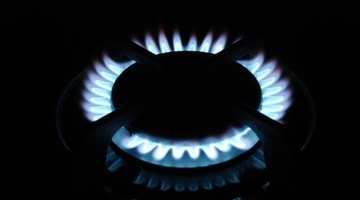Gas Range Installation Requirements
Gas ranges are one of the major types of cooking ranges for homes and professional kitchens alike, along with fully-electric stoves. While older gas ranges use pilot lights to ignite the burners, newer models include electronic ignitions, making them safer and more efficient. For a home builder or owner to install a gas range, several requirements must be met.
Space

Space is one of the most fundamental requirements for installing a gas range. While most kitchens include standard-size openings for appliances, measure your space before choosing a range. Besides the width between fixtures, the kitchen must have space for the oven door to open if the range is equipped with an oven. For countertop ranges, measure to ensure that there is ample space for the entire range assembly. Range manufacturers should list the size requirements for each product in a brochure or on their websites.
Gas Service
Another fundamental requirement is natural gas service. Besides local utility service, a home should have ample pressure in its gas lines to serve the new range. The local utility provider can determine this by running a simple diagnostic test and may need to adjust a valve on the gas meter to allow greater flow before installing the range. For rural customers who lack gas service, an electric stove may be the only option.
Shutoff
Safety is an important concern whenever gas is involved. Before installing your gas range, ask everyone in the house to avoid activities like smoking that might cause errant sparks. Shut off the gas line to the house by turning the shutoff valve on your gas meter to the "Off" position. Some meters include holes that line up so you can lock the meter in the "Off" position with a padlock, which is a good idea for added safety.
Testing
Once you have installed the range using a wrench and the pipes provided with the range, test for leaks. Coat all of the connections with a solution of dish soap and water. Turn the gas back on at your meter and watch for any bubbles to form at joints and connections of the pipes. If, after a few minutes, no bubbles form, your range is ready for use.



